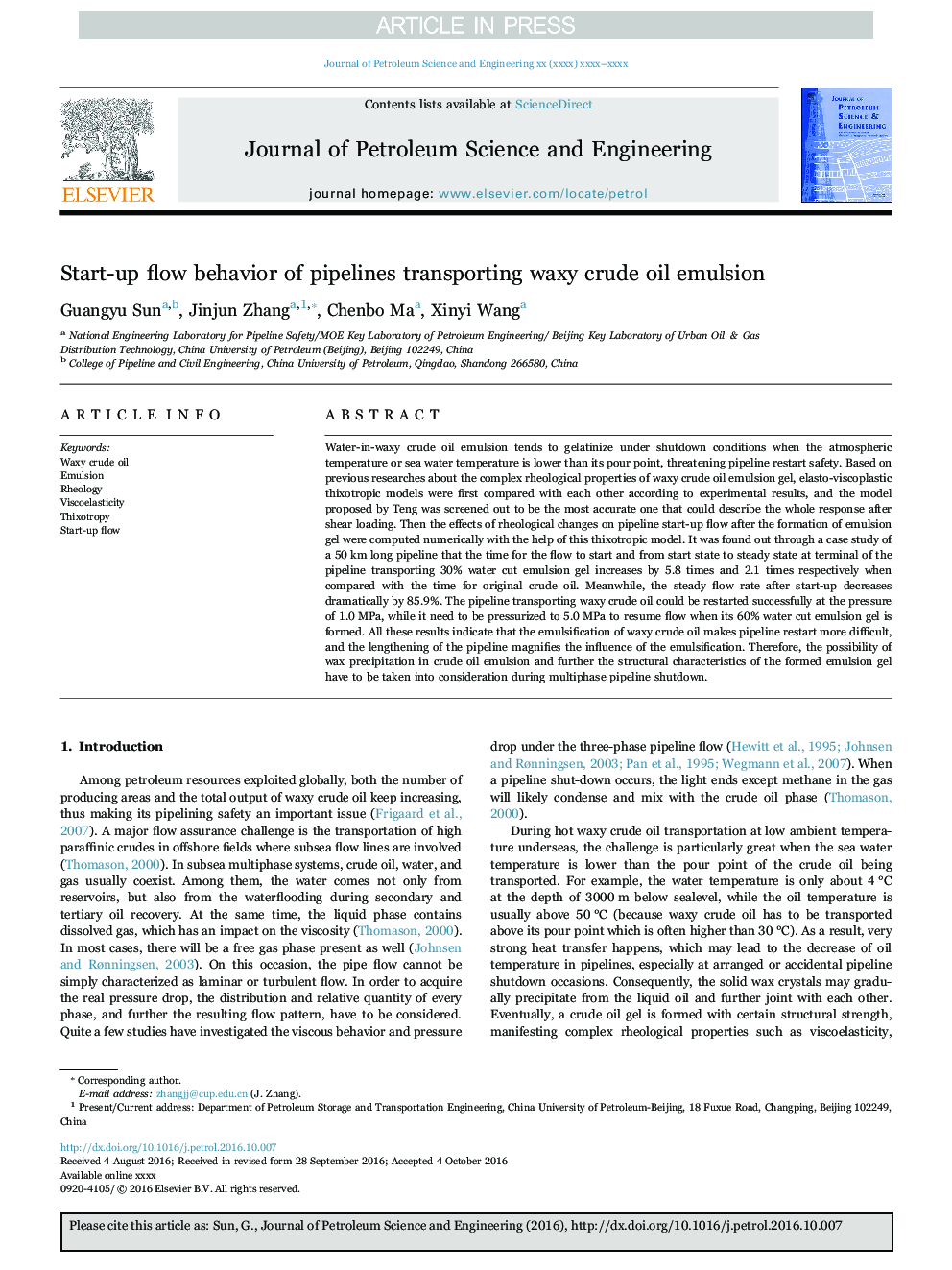| Article ID | Journal | Published Year | Pages | File Type |
|---|---|---|---|---|
| 8125845 | Journal of Petroleum Science and Engineering | 2016 | 10 Pages |
Abstract
Water-in-waxy crude oil emulsion tends to gelatinize under shutdown conditions when the atmospheric temperature or sea water temperature is lower than its pour point, threatening pipeline restart safety. Based on previous researches about the complex rheological properties of waxy crude oil emulsion gel, elasto-viscoplastic thixotropic models were first compared with each other according to experimental results, and the model proposed by Teng was screened out to be the most accurate one that could describe the whole response after shear loading. Then the effects of rheological changes on pipeline start-up flow after the formation of emulsion gel were computed numerically with the help of this thixotropic model. It was found out through a case study of a 50Â km long pipeline that the time for the flow to start and from start state to steady state at terminal of the pipeline transporting 30% water cut emulsion gel increases by 5.8 times and 2.1 times respectively when compared with the time for original crude oil. Meanwhile, the steady flow rate after start-up decreases dramatically by 85.9%. The pipeline transporting waxy crude oil could be restarted successfully at the pressure of 1.0Â MPa, while it need to be pressurized to 5.0Â MPa to resume flow when its 60% water cut emulsion gel is formed. All these results indicate that the emulsification of waxy crude oil makes pipeline restart more difficult, and the lengthening of the pipeline magnifies the influence of the emulsification. Therefore, the possibility of wax precipitation in crude oil emulsion and further the structural characteristics of the formed emulsion gel have to be taken into consideration during multiphase pipeline shutdown.
Related Topics
Physical Sciences and Engineering
Earth and Planetary Sciences
Economic Geology
Authors
Guangyu Sun, Jinjun Zhang, Chenbo Ma, Xinyi Wang,
